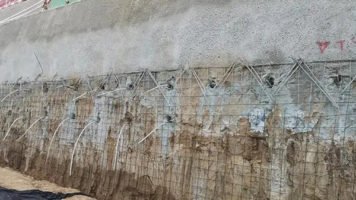Soil nailing is an in-situ soil reinforcement technology. Drilling holes in the in-situ slope of the excavated soil to insert different material, and then grouting along the full length of the hole to form a slender rod anchored in the soil. This is called the soil nail wall.
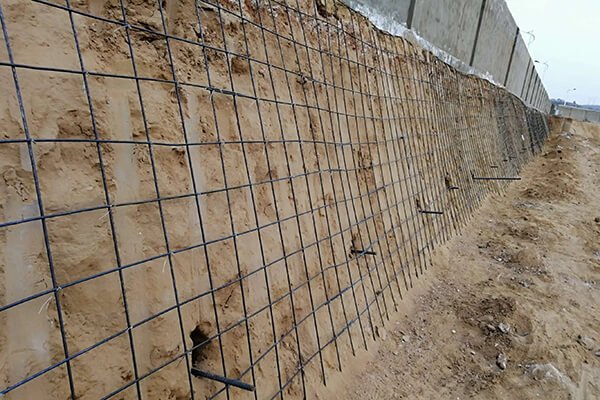
How Does Soil Nails Wall Work?
Relying on the frictional resistance between the soil nail and the soil mass, it is passively stressed when the soil mass is deformed, and mainly bears the action of tensile force. The reinforced concrete surface layer is sprayed on the surface of the slope body, so that the soil between the surface layer and the soil nails is reinforced to form an in-situ retaining wall with self-stabilizing ability, thereby maintaining the stability of the excavation surface.
What Materials Can Be Used for Soil Nail Wall Support?
Many materials can be used as soil nails, such as threaded steel bars, hot rolled ribbed steel bars, finishing rolled rebar, steel strand, self-drilling hollow rock bolts, etc. Different materials have different characters.
Finishing Threaded Steel Bar
For threaded steel bars, it has been proven that using the threaded steel bar as soil nails is very economical. Also, the threaded steel bar can be designed in different ways. However, it is inevitable that we need to drill a hole first and then put the threaded steel bar in, which results in a longer construction cycle for every single bar.
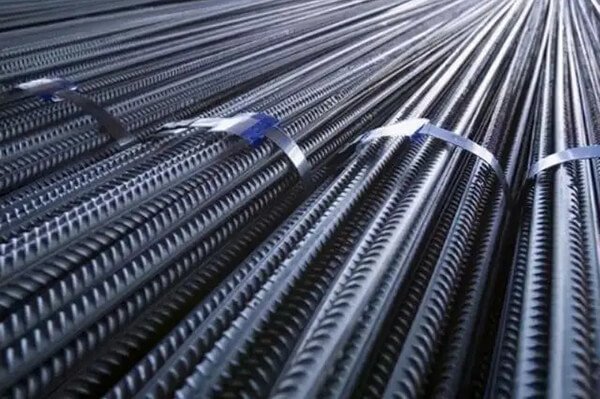
Hot Rolled Ribbed Steel Bar
Similarly, using the hot-rolled ribbed steel bar as soil nails is also very economical. This technique is relatively more feasible for most geological conditions and it has been applied to many projects. But, the hot-rolled ribbed steel bar requires a more spacious space and more workers to process.
Steel Strand
The steel strand is different from the above two kinds of steel bars. It consists of several steel wires and every wire could provide an ultimate load of 94.3 to 530kN. Therefore, the ultimate load of the steel strand is much higher than other materials. The disadvantage of the steel strand is that it needs to be made on-site, which will extend the whole processing time and lower the constructing efficiency.
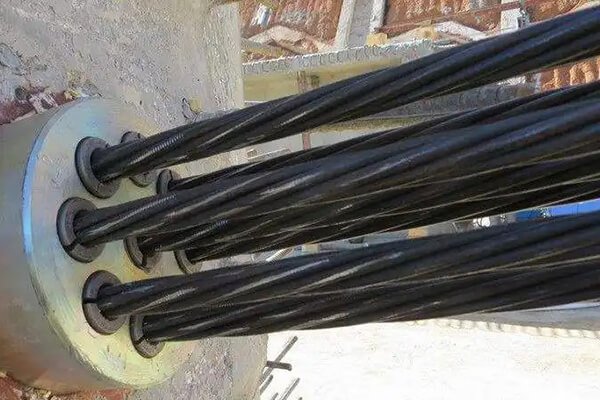
Self-drilling Hollow Rock Bolt
The self-drilling hollow rock bolt system is a new technique to support unstable conditions, which is composed of a hollow anchor bar, coupler, nut, drill bit, plate, and centralizer. It can combine drilling, grouting, and anchoring in one process. It is safe, efficient, convenient, and technically feasible for broken rock, loose soil, and geological conditions where is difficult to drill holes. It helps to ensure the anchoring effect in complex ground conditions and achieve the best construction result.
Sinorock divides our products into R thread and T thread systems. The sizes of the self-drilling rock bolt include R25, R32, R38, R51, T30, T40, T52, T73, T76, T103, T111, T127, T130, T150, and T200.
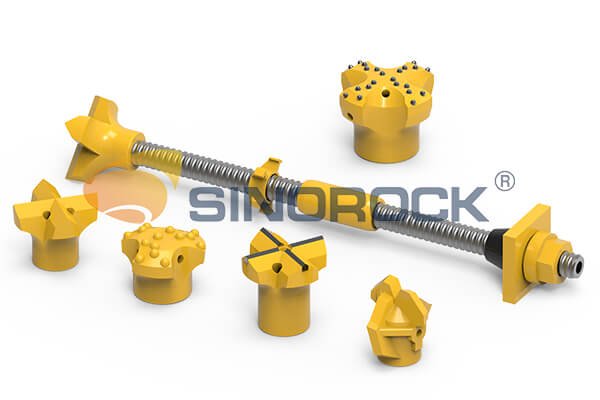
What Are the Advantages of Using Self Drilling Rock Bolts in Soil Nail Wall?
When using the self-drilling hollow rock bolts as soil nails, we have a couple of advantages that list below.
1. Hollow bolts are drill pipes, grouting pipes, and bolts, no grouting pipes or exhaust pipes are required, and the construction equipment is simple;
2. The full-length bonding and anchoring are closely combined with the surrounding rock and soil, and the pulling force bearing capacity is larger;
3. The force value range of common bolts is 200kN-7940kN, and the selection range is wide;
4. The product can meet temporary or permanent support (galvanized);
5. There are many types of drill bits, which are suitable for a wide range of strata (sand soil-IV and V-level surrounding rocks);
6. Fewer personnel are required during construction, only three people are required, and the labor cost is low;
7. It can be used in special strata or strata with unknown geological conditions, and the effect of pore formation and force value is better than other bars;
8. The disturbance to the stratum during the construction process is small;
9. Grouting during drilling can properly expand the hole diameter and improve the bearing capacity of the drawing force;
10. The impact on the surrounding environment is small during drilling and construction, and almost no pollution is produced.
One way or another, there are various soil nails that we can choose according to the different conditions and demands.

